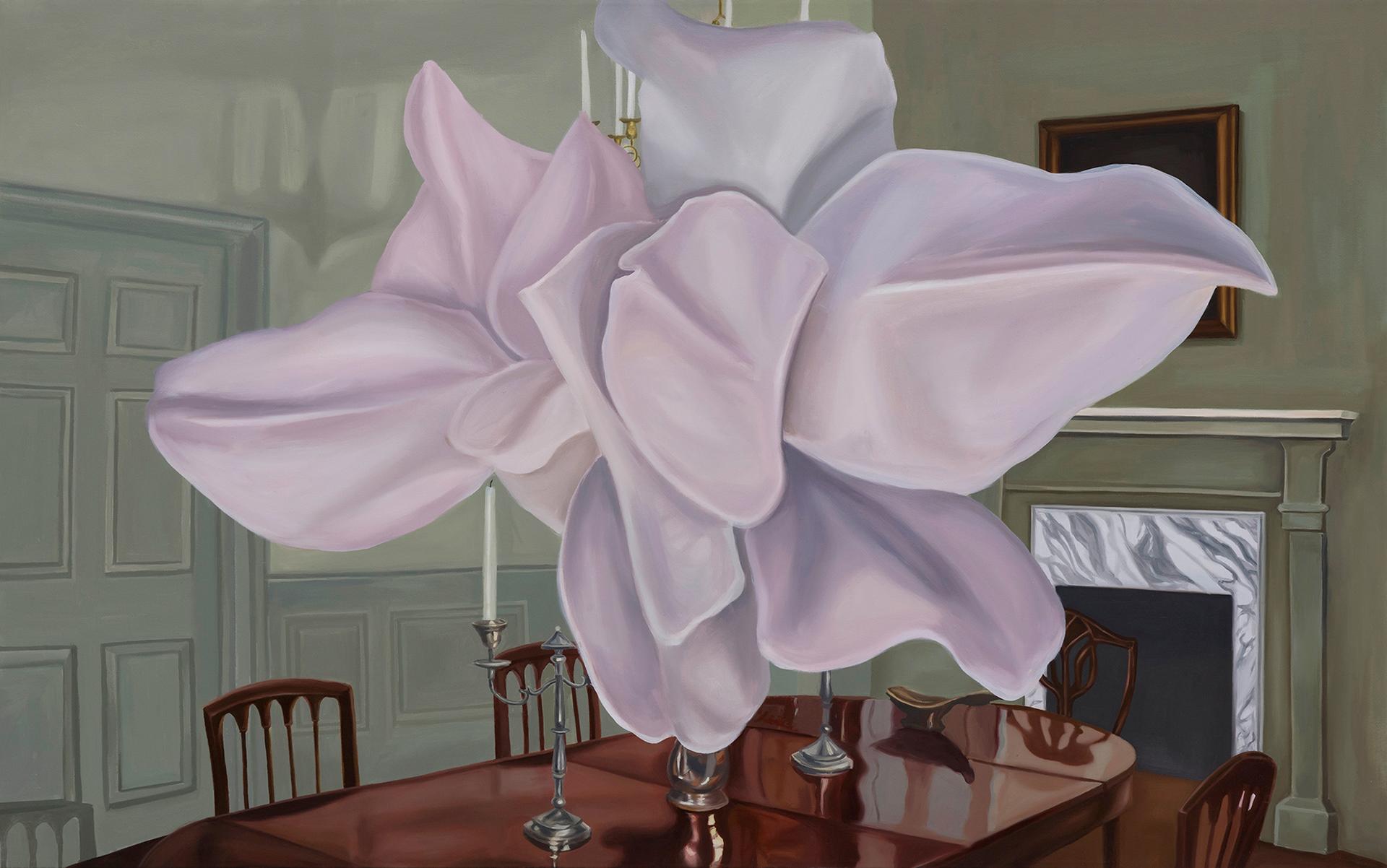In Merve Denizci's series titled "Blossom or Fanthom", she paints masculine places of power with a realistic style and paints their flowers that contrast with this realistic style. The overwhelming, muffled atmosphere of these claustrophobic bourgeois spaces, which are painted in pale colors, furnished in the style of the 17th and 18th centuries, and crammed with stuff, dominate. It is possible to see only the traces of the individual in these places, where there is not the individual itself, but its absence.
If you look at the pictures of Degas, Carl Holsoe, Nicolaes Maes and similar artists of the period depicting the domestic life of the 17th , 18th century, you will see; was the female figure, the constant inhabitant of a magnificent bourgeois house. On the contrary, women are almost absent in paintings depicting the public sphere. Considering that the increase in the visibility of women in the public sphere began in the 19th and 20th century, it is not difficult to understand why the female figure is prominently featured in the paintings of domestic life.
The artist places abstract, feminine, outdoor flowers on these spaces, which are reminiscent of the domestic spaces of the history of painting, contrary to the general perspective of the painting. Contrasting with these masculine, power-subject domestic spaces in the background, flowers distort the illusion of the painting on the viewer, placing the painting on a two-dimensional plane and blurring the distinction between private and public spaces. In this series, the artist breaks the authority of painting over the viewer by reminding us again that painting is only an imagination that represents reality, and reinterprets the masculine point of view of the domestic space, "home", to which she refers to art history, with her own style.
If you look at the pictures of Degas, Carl Holsoe, Nicolaes Maes and similar artists of the period depicting the domestic life of the 17th , 18th century, you will see; was the female figure, the constant inhabitant of a magnificent bourgeois house. On the contrary, women are almost absent in paintings depicting the public sphere. Considering that the increase in the visibility of women in the public sphere began in the 19th and 20th century, it is not difficult to understand why the female figure is prominently featured in the paintings of domestic life.
The artist places abstract, feminine, outdoor flowers on these spaces, which are reminiscent of the domestic spaces of the history of painting, contrary to the general perspective of the painting. Contrasting with these masculine, power-subject domestic spaces in the background, flowers distort the illusion of the painting on the viewer, placing the painting on a two-dimensional plane and blurring the distinction between private and public spaces. In this series, the artist breaks the authority of painting over the viewer by reminding us again that painting is only an imagination that represents reality, and reinterprets the masculine point of view of the domestic space, "home", to which she refers to art history, with her own style.
Eren Bayrak
